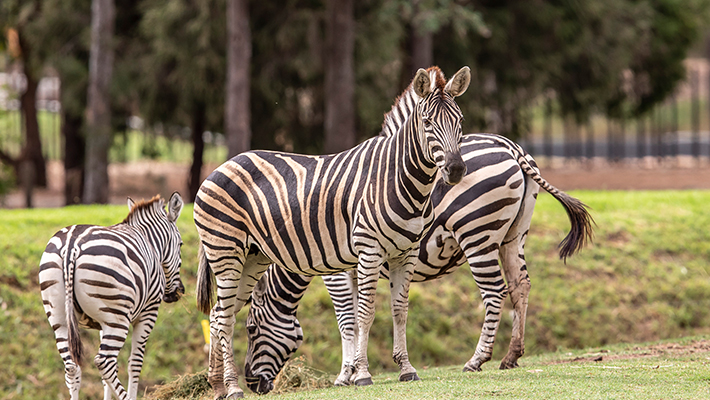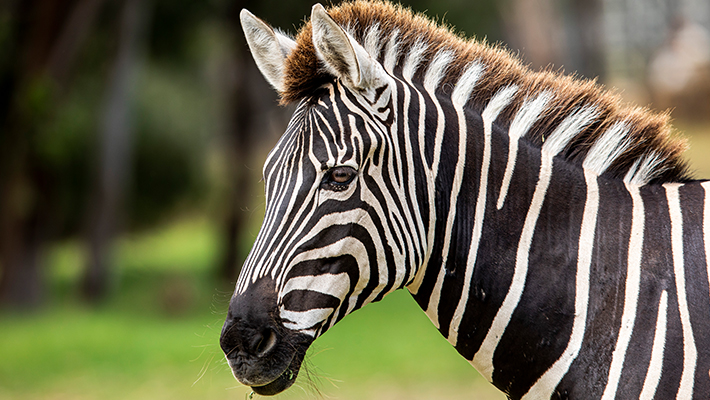Posted on 06th February 2024 by Media Relations
What are key Zebra characteristics?
I’ve worked with zebras for five years now and I can honestly say I have only scratched the surface when it comes to understanding this species. What I can say is that zebras are proud and stubborn at times, but more than that they are fiercely loyal, caring and inspiring creatures.
Zebras are an iconic animal of the African landscape, an adaptable and incredibly successful large herbivore, more than up to the task of conquering the odds in such a harsh and wild place.
How many species of Zebra are there?
There are three species of zebra: plains, mountains, and Grévy's.


How many species of Zebra live at Taronga Zoo?
Here at Taronga Western Plains Zoo, we house 12 Plains Zebra in three separate groups:
- A bachelor group of four that lives harmoniously alongside giraffe on our main giraffe habitat;
- Another group of three males that live in the spacious expanse of our mixed-species savannah habitat, and;
- A breeding group of five individuals in our main zebra habitat.
Where is a Zebra's natural habitat?
The Mountain Zebra inhabits rocky slopes in Namibia and Angola, not a place you would expect to find zebra!
Grévy's Zebra is the largest of the species, weighing up to 450kg, with a very powerful build and large round ears to pick up faint sounds on the grasslands of Kenya, Ethiopia and Somalia.
The Plains Zebra is the most numerous and the smallest of the species, covering a wide range across the African continent. They can be seen in herds of over 10,000 when the Grant’s Zebra (Plains Zebra subspecies) migrates across the Serengeti in the rainy season.
Do Zebra's live in groups?
Plains and Mountain Zebra live in herds, often with a single stallion and several mares and their offspring. The family ties zebra form are very strong, and they fiercely protect each other. Male zebras are heavy and formidable targets and will run at the back of the herd to protect females and young from predators, using their powerful hind legs to fend off predators as large as lions. When zebras sleep, one will stay awake to keep watch over the herd.
Easily the most recognisable trait of the zebra is its stripes. The stunning adaptation serves several purposes, for example it tricks the eyes of predators when a herd is running together, making it more difficult to single out an individual. Every pattern is also completely unique, allowing family members to identify and remember each other.
Zebra Conservation Status
Unfortunately, Mountain and Grévy's zebra are facing hard times in the wild, being listed as threatened and endangered respectively. Mountain Zebra numbers sit at around 25,000 as they are forced to compete with livestock and human settlement in what little landscape the mountains can provide them.
Grévy's Zebra face an even more imminent threat, with only an estimated 2,250 remaining due to outbreaks of anthrax, a disease more commonly carried by livestock.
However it is not all negative, with places like the Mountain Zebra National Park in South Africa helping the local population to bounce back from just 47 to now several hundred.